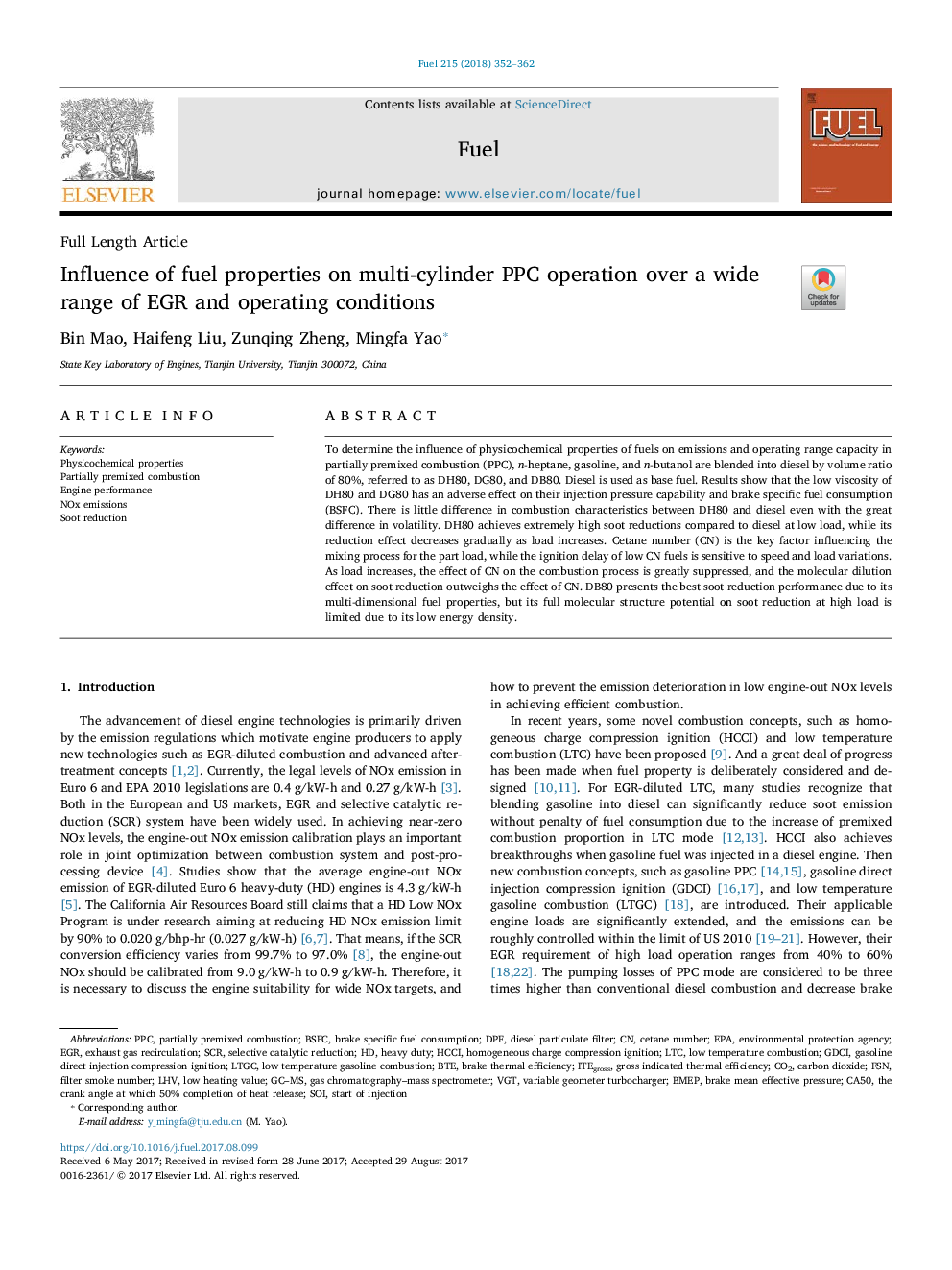| Article ID | Journal | Published Year | Pages | File Type |
|---|---|---|---|---|
| 6632313 | Fuel | 2018 | 11 Pages |
Abstract
To determine the influence of physicochemical properties of fuels on emissions and operating range capacity in partially premixed combustion (PPC), n-heptane, gasoline, and n-butanol are blended into diesel by volume ratio of 80%, referred to as DH80, DG80, and DB80. Diesel is used as base fuel. Results show that the low viscosity of DH80 and DG80 has an adverse effect on their injection pressure capability and brake specific fuel consumption (BSFC). There is little difference in combustion characteristics between DH80 and diesel even with the great difference in volatility. DH80 achieves extremely high soot reductions compared to diesel at low load, while its reduction effect decreases gradually as load increases. Cetane number (CN) is the key factor influencing the mixing process for the part load, while the ignition delay of low CN fuels is sensitive to speed and load variations. As load increases, the effect of CN on the combustion process is greatly suppressed, and the molecular dilution effect on soot reduction outweighs the effect of CN. DB80 presents the best soot reduction performance due to its multi-dimensional fuel properties, but its full molecular structure potential on soot reduction at high load is limited due to its low energy density.
Keywords
EPACA50LHVBMEPLTCPPCSOISoot reductionHCCIDPFBSFCFSNEGRVGTGC–MSEnvironmental Protection AgencyPartially premixed combustionLow temperature combustionNOx emissionsbrake mean effective pressurebrake specific fuel consumptionCetane numberPhysicochemical propertiesCarbon dioxideBrake thermal efficiencyHomogeneous Charge Compression IgnitionStart of injectionFilter Smoke Numbergas chromatography–mass spectrometerEngine performanceDiesel particulate filterLow heating valueBTEheavy dutySelective catalytic reductionCO2exhaust gas recirculationSCR
Related Topics
Physical Sciences and Engineering
Chemical Engineering
Chemical Engineering (General)
Authors
Bin Mao, Haifeng Liu, Zunqing Zheng, Mingfa Yao,
